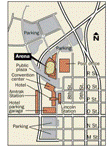Community and Regional Planning Program
ORCID IDs
https://orcid.org/0000-0002-1352-1046 Weiguo Jiang
Date of this Version
9-2019
Citation
Remote Sens. 2019, 11, 2213;
doi:10.3390/rs11192213
Abstract
The spatiotemporal changes of open-surface water bodies in the Yangtze River Basin (YRB) have profound influences on sustainable economic development, and are also closely relevant to water scarcity in China. However, long-term changes of open-surface water bodies in the YRB have remained poorly characterized. Taking advantage of the Google Earth Engine (GEE) cloud platform, this study processed 75,593 scenes of Landsat images to investigate the long-term changes of open-surface water bodies in the YRB from 1984 to 2018. In this study, we adopted the percentile-based image composite method to collect training samples and proposed a multiple index water detection rule (MIWDR) to quickly extract the open-surface water bodies. The results indicated that (1) the MIWDR is suitable for the long-term and large-scale Landsat water bodies mapping, especially in the urban regions. (2) The areas of permanent water bodies and seasonal water bodies were 29,076.70 km2 and 21,526.24 km2, accounting for 57.46% and 42.54% of the total open-surface water bodies in the YRB, respectively. (3) The permanent water bodies in the YRB increased along with the decreases in the seasonal water bodies from 1984 to 2018. In general, the total open-surface surface water bodies in the YRB experienced an increasing trend, with an obvious spatial heterogeneity. (4) The changes of open-surface water bodies were associated with the climate changes and intense human activities in the YRB, however, the influences varied among different regions and need to be further investigated in the future.
Included in
Hydraulic Engineering Commons, Hydrology Commons, Urban, Community and Regional Planning Commons


Comments
© 2019 by the authors. Licensee MDPI, Basel, Switzerland. This article is an open access article distributed under the terms and conditions of the Creative Commons Attribution (CC BY) license